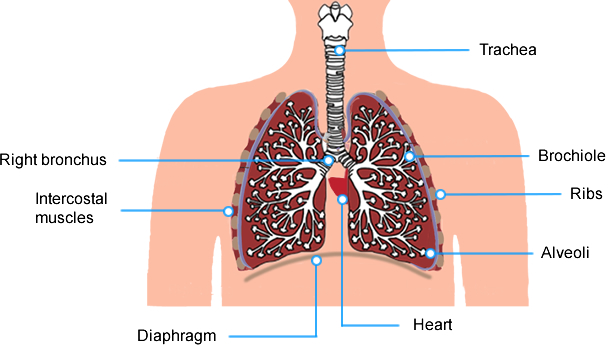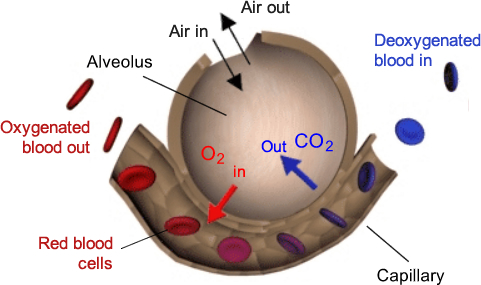Structure and function of the gas exchange system
Breathing, respiration and gas exchange Structure of the gas exchange system Part of the gas exchange system Function Trachea Windpipe that carries air from mouth to lungs. Has cartilage rings to keep it open. Alveoli Tiny air sacs at the end of bronchioles where gas exchange happens. Bronchus Left and right branches of trachea that lead to each lung. Bronchiole Smaller tubes that split from bronchi and take air deeper into lungs. Intercostal muscles Muscles between ribs that form chest wall. They move with diaphragm during breathing. Diaphragm Flat muscle under lungs that changes shape with intercostal muscles during breathing. How does oxygen travel into blood?
The gas exchange system is made from key parts, each with a different function:

Alveoli Note: Deoxygenated blood appears blue in this diagram for explanation purposes only. Exchange of gases in the Lungs In the alveolus (single air sac) oxygen passes from a high concentration (loads of oxygen) through the thin wall into the blood capillary where there is a low concentration (very little oxygen) . This is called diffusion, because oxygen is moving from high concentration to low concentration. When blood returns to lungs it has high concentration of carbon dioxide, so CO2 diffuses out of the blood into the alveolus.

Breathing is a gas exchange mechanism. Your Lungs help to do just that! They contain millions of tiny air pockets called ALVEOLI (air sacs) which are adapted to maximise the diffusion of carbon dioxide and oxygen (see diagram below). Alveoli are good at gas exchange because they have:
Summary: